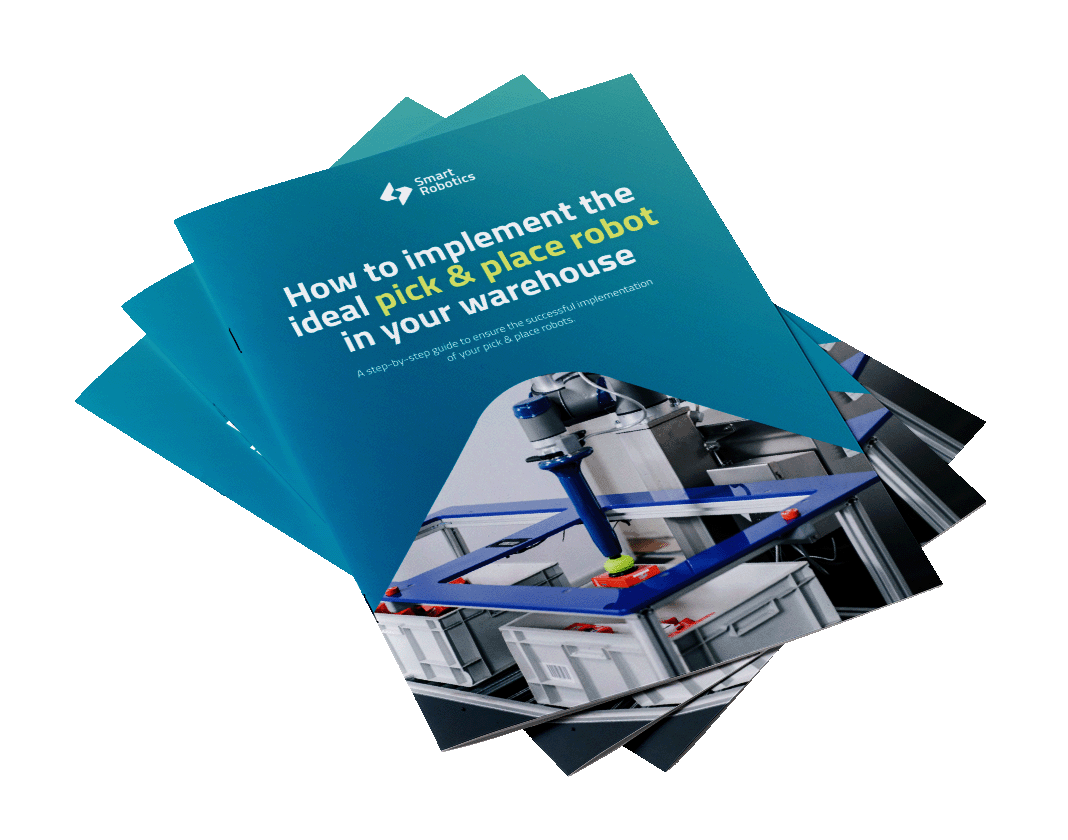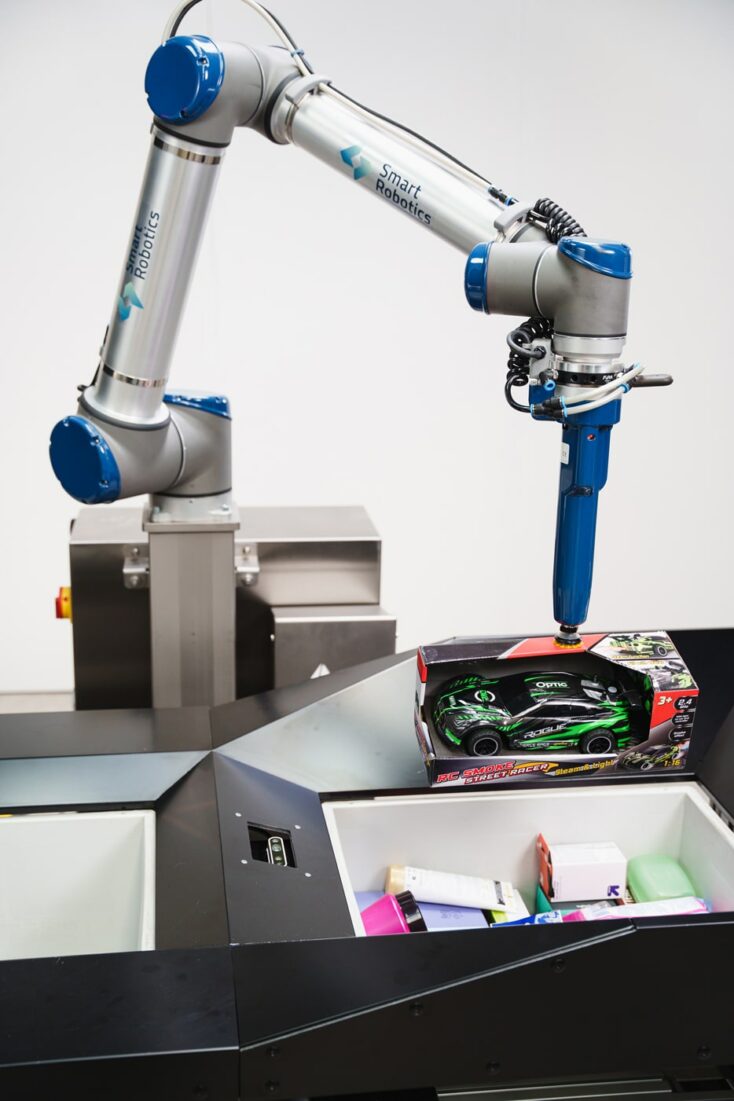A robot or cobot in your warehouse? Advantages & disadvantages
When looking into automating your warehouse with a pick and place solution, a question that often arises is; do we choose a robot or a cobot solution? What is the best choice? A clear answer to this question cannot be given. However, one can look into the advantages and disadvantages of both solutions. This blog discusses the advantages and disadvantages of using a robot or a cobot in your warehouse.
Advantages of a cobot: no safety fence
One of the main advantages of a cobot is that it can be implemented without the need for a safety fence. It has special sensors and a safety controller. This way, the force at which it could collide with a person is very low. This allows for an operator to cooperate with the robot and help with tasks the cobot cannot perform independently. For example, replacing a full pallet with an empty pallet while the cobot is stacking the pallet on the other side. In addition, not needing a safety fence makes it possible to design solutions with a small footprint, as safety fences take up a lot of space.
Even though alternatives for safety fences are available for robots, e.g. safety scanners and security cameras, they often have to be placed at least 2 meters away from the robot to take into account response time. This means you still need a large floor space.
Easy cobot programming
A second advantage of a cobot is that it is easy to program. Not only robot integrators install cobots; end-users can sometimes do it themselves. This accounts for easy, hard programmed applications. Users often do not realize that it takes more to run an application 24/7. In markets such as logistics, tasks are usually very dynamic and may require advanced software and sensor systems such as 3D cameras.
Cobot: low-cost solution?
Cobots are often marketed as low-cost solutions. However, a cobot arm itself is usually more expensive than a robot arm. That makes sense, as components such as sensors to ensure safety are expensive. For example: A cobot with a payload of 10kg with an arm length of 1.5 meter costs around €30.000. A similar robot costs around €25.000. However, a complete cobot system is usually cheaper than a complete robot system as you save money on additional safety features needed for the robot system.
Disadvantages of a cobot
A disadvantage of a cobot is its limited power, speed and scope. Cobots exist that can lift up to 35 kg, but to ensure safety they have to move at a very low speed. In general, cobots can lift about 10 kg and move at a maximum speed of 1.5m/s when you take into account the safety of the grippers and peripherals of the cobot. This means the cobot can execute about 700 actions per hour. For many automation questions within the logistics market, this speed and payload are sufficient. However, if you are looking for a solution that can handle boxes with multiple products or can handle a large number of individual products, the cobot speed and payload may be insufficient. In that case, it might be better to consider using a robot.
Advantages and disadvantages of a robot
Both an advantage and a disadvantage is that robots are available in many different executions. This means you can use a specific, suitable robot for each task and optimize the performance. However, this also means the robot is less flexible and is less widely applicable for future tasks. What we often see in real life is that a robot is used for a specific task for a while, and then stands in the corner with no purpose even though its lifetime is not spent yet.
That is where a cobot has an advantage again. Nowadays they are often equipped with cameras, force sensors and user interfaces. You buy a complete, generically applicable system that remains valuable once the task it was bought for comes to an end.
Robot or cobot: what to choose?
To answer the question whether it is better to use a robot or a cobot solution in your warehouse: there is no clear answer. It depends on the application, the needed performance and whether the hardware should to be multi-purpose or not. It all depends on your business case. Both cobots and robots have advantages. The choice is yours.
This blog is an adaption of an article written by Heico Sandee for Logistiek.nl, a Dutch online news website and magazine for the logistics market. You can read the original article (Dutch) via this link.
Download our free white paper
And learn how to find and implement the ideal pick & place robot in your warehouse. Leave your contact details and receive a download link for the white paper for free.





